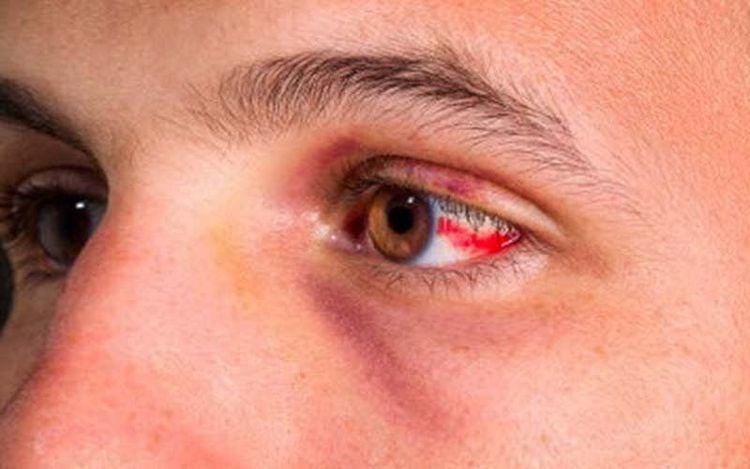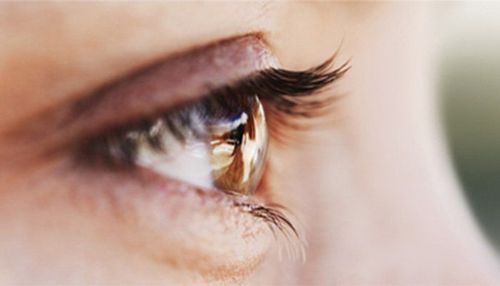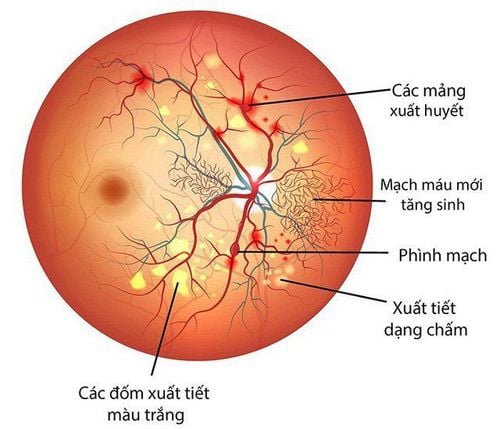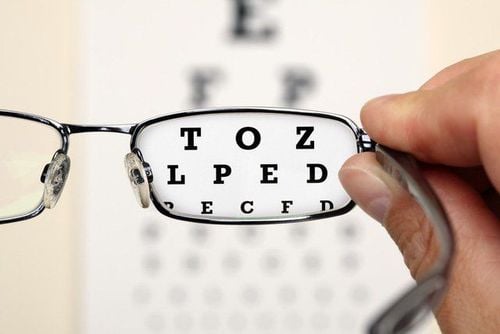This is an automatically translated article.
The article is professionally consulted by Master, Doctor Hoang Thanh Nga - Ophthalmologist - Department of Medical Examination and Internal Medicine - Vinmec Ha Long International General Hospital.
Central chorioretinopathy is 1 in 10 diseases of the posterior hemisphere that cause mild to moderate vision loss. This is a disease related to the damage of the pigment epithelium causing fluid accumulation in the center of the retina and the cause has not been identified so far.
1. Overview of the disease
Central chorioretinopathy is a disease known for a long time with many different names such as: central retinitis, recurrent central chorioretinitis, serous central chorioretinitis, retinal detachment primary flattening of the macular region. Because the disease affects both the choroid and the retina, the term serous chorioretinopathy is more commonly used.
Central chorioretinopathy is characterized when the retina accumulates a seroma right in the center just below the retinal layer, affecting the patient's vision function. Central chorioretinopathy usually occurs in one eye, is highly relapsing in nature.

Hắc võng mạc trung tâm ảnh hưởng đến khả năng nhìn của người bệnh
People divide central chorioretinopathy into 4 types mainly based on fluorescein retinal angiography:
Typical central chorioretinopathy Atypical central chorioretinopathy Pigmentative epithelial detachment simple Diffuse retinal pigment epithelial disease Central chorioretinopathy can be found all over the world but is more common in Southeast Asian countries such as Japan, China, Vietnam... patients aged 20-50 years, especially men. The disease also often occurs in people who smoke, sinusitis, diabetes, high blood pressure ...
2. Is central chorioretinopathy dangerous?
When infected, patients often have blurred vision in one eye for 4-6 months, then it goes away on its own. Therefore, this disease is considered not too dangerous. However, in some cases, the disease progresses for a long time and has severe forms, becoming chronic causing changes in the retina such as causing atrophy and loss of function of the retina... In addition, the disease is also possible The recurrence rate is as high as 30%.
3. Symptoms of central chorioretinopathy
When sick, patients will see visual impairment depending on the degree (severe or mild), sometimes see blurred or dark clouds (shadows) in front of the eyes, making the vision impaired. There are also some other symptoms such as:
Color disorder: Seeing color changes, especially pale, light and yellow colors. As the earliest symptom of the disease and persists for a long time, even after the disease has stabilized, the patient may still have color disturbances for about 2-3 months. Looking at the edges, walls, windows.... see distortion, warping.

Suy giảm thị lực là một trong những triệu chứng của bệnh
4. How to diagnose central chorioretinopathy?
When examining, the doctor asks the patient about the risk factors because this is an important sign to recognize central chorioretinopathy. Often people who are stressed, stressed, have insomnia, drink alcohol, smoke, have high cortisol levels, treat atopic dermatitis, sinusitis... are at higher risk of disease than usual.
To confirm the diagnosis, the doctor will simultaneously perform several imaging tests such as:
Assessment of macular glare: Using an ophthalmoscope to illuminate the macular area for 30 seconds. Visual acuity before and after the test. Usually after 30-50 seconds vision will recover to pre-test. In macular diseases, vision recovers 4-5 times slower than normal people. Observe and evaluate if the central light of the macula is darkened, reduced or lost. Close examination shows that the retina in the center of the macular region is raised, sometimes the whole circle, sometimes just a part of the circle. Perform optical tomography of the retina. If it is necessary to differentiate from other diseases, fluorescein angiography can be taken.
5. How to treat central chorioretinopathy?
Treatment of central chorioretinopathy: Because it is not known why causes vasomotor, capillary, choroidal and pigmented epithelium disorders, the treatment direction is supportive and monitoring the disease status.
Combine treatment with vasodilators, reduce edema, and enhance nutrition. The prognosis of central chorioretinopathy is generally benign. In cases where the disease persists and recurs many times, the doctor may recommend fluorescein angiography to find the leak point, then laser photocoagulation of the retina to burn the leak point to help drain fluid in the retina, thereby improving eye sight. This method is only effective if the leak is outside the macular avascular region. In addition, there is a new method, the micro-fig laser, which can be applied when the patient is newly ill, without waiting for 3-6 months. However, this method is not yet popular in many places. Patients with central chorioretinopathy should pay attention to rest, avoid risk factors such as alcohol, tobacco, avoid nervous stress, insomnia to reduce the disease... Patients should not be too worried worry when suffering from this disease, because the disease is benign and almost cured with medication. The Ophthalmology Department at Vinmec International General Hospital is the leading medical facility in the country in the examination and treatment of eye-related diseases, with comprehensive quality in both expertise and medical services.
Eye specialist at Vinmec has comprehensive vision and eye health care functions for children, adults and the elderly including: refractive error check, laser treatment and surgery. In addition, the department also has the task of coordinating with other clinical departments in the treatment of pathological complications and eye injuries caused by accidents.
Besides, the team of Ophthalmologists here are experienced doctors who have implemented many types of surgery from routine to difficult surgeries, especially techniques that require aesthetics. . With enthusiasm and love for the profession, the team of doctors working at Vinmec always gives customers the best services with the highest service quality.
Customers can go directly to Vinmec Health System nationwide to visit or book an appointment online HERE.
Recommended video:
First corneal transplant at Vinmec: Rekindling the light after decades of being in the dark
SEE MORE
Refractive error screening package Children can also suffer from farsightedness Astigmatism is worth it worried as nearsighted













